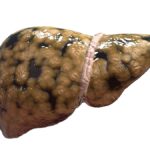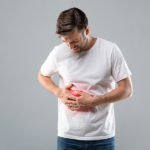By David Blyweiss, M.D., Advanced Natural Wellness
May 15, 2013
- This silent liver disease is more common than you think
- Is soda pop more dangerous than alcohol?
- Powerful nutrients may reverse the damage
Every now and then I run across a patient who has all of the hallmarks of non-alcoholic fatty liver disease. And if I think it’s a risk factor, I run tests to confirm the diagnosis.
When the results are negative it’s good news all the way around. But when they’re positive, I often get a startled reaction: “How can I have fatty liver, I don’t even drink!”
The fact of the matter is this. Fatty liver is no longer confined to people who spend their days boozing it up.
Non-alcoholic fatty liver disease (NAFLD) is becoming much more widespread in the U.S. In fact, NAFLD is the most common form of chronic liver disease in America today. And if we don’t take measures to halt the progression of this disease, we could be faced with an epidemic in the near future.
Today, up to 30% of Americans have this liver disease. But the numbers are even worse for people with diabetes. It’s estimated that a whopping 70% of diabetics have NAFLD.
MD Exposes the Hidden Danger to Your Eyes

When your eyesight starts to fail, it's a real problem. Suddenly you can't go to the grocery store... you can't get to the doctor if you have an emergency... you can't meet your friends for dinner…
Your "regular" doctor doesn't have time to keep up with the latest research. And the same goes for eye doctors. They go to school to learn how to fit you for glasses and contacts, but have no way of preventing the damage and loss of eyesight that threatens your freedom and independence.
Let me show you something that explains a LOT about how your eyes work.
In my FREE Special Report, I'll show you a HUGE, untapped resource for your eyes that safely and naturally restores clear, effortless eyesight.
Click here to get started...
You may not be familiar with this potentially life-changing condition.
It occurs when your liver has trouble breaking down fats. This causes fat to build up in your liver tissue. Over time, this can trigger inflammation, scarring of the liver and even cirrhosis.
If you have this condition, you may not even be aware of it. That’s because many people don’t have symptoms that send out red flags. So it’s not uncommon that NAFLD often remains undiagnosed.
However, others might experience fatigue, weakness, pain in the upper right abdomen and unexplained weight loss. And if the condition worsens, it could lead to yellowing of the skin and eyes, fluid build up and swelling of the legs.
Your doctor may suspect NAFLD if you are overweight and have diabetes or insulin resistance. A simple blood test can reveal whether or not you have elevated liver enzymes. And an ultrasound can confirm an NAFLD diagnosis.
In the meantime, you might think fatty liver has more to do with your fat intake than anything else. But it turns out the amount of sugars you ingest may have an even greater role…
There are many things that can add to your risk of NAFLD. Diabetes, metabolic syndrome and obesity are at the top of the list. But your cholesterol and triglyceride levels play a role, too.
Ultimately, fatty liver is a silent epidemic that may be another product of our unhealthy eating environment.
Scientists believe our increase increased consumption of fructose may be one of the main causes. Research shows patients with NAFLD consume 2 to 3 times more fructose than people without the disease.
Are You Suffering From...
- Love handles and a pot belly
- Romance that isn't what it used to
- Forgetfulness and inattention
- Low (or no) strength and endurance
- A sex drive that's shifted into neutral...or worse
If so...you may have Mature Male Burnout. Click here to discover more about this unique condition and what you can do about it.
Most of our fructose consumption comes in the form of high fructose corn syrup (HFCS.) Soft drinks are, by far, the most common source of this health threat. Many fruit juices and processed foods also contain HFCS.
But when researchers zeroed in on soda drinkers, do you know what they discovered?
Almost half (44%) of the people who slurped down soft drinks had mild fatty liver. An additional 38% had moderate fatty liver. And the final 18% all had a diagnosis of severe fatty liver.
In this study, soft drink consumption was the only independent variable that was able to predict the presence of fatty liver in 82.5% of cases. Other research finds patients with NAFLD drink about twice as many soft drinks than those without the disease.
The reason HFCS adds to your risk of fatty liver is because it increases triglyceride production. Problem is those fatty triglycerides start accumulating in the liver. And when they don’t get released, the amount of fat in the liver continues to build.
Next thing you know, you’ve got fatty liver.
While the medical community has no cure for non-alcoholic fatty liver, there are things you can do on your own to stop – and even reverse – this disease.
Clearly, the first thing you need to start watching out for is high fructose corn syrups. And that doesn’t just mean cutting out the sodas. See this recent issue for my list of 15 foods and beverages that may contain much more HFCS than you might expect.
Watching your weight, exercising regularly and staying away from alcohol are also important changes you can make. There also a few supplements that pack a lot of power when it comes to your liver health.
N-acetylcysteine (NAC.) Research shows people with fatty liver all have one thing in common. They have reduced glutathione levels. Your body doesn’t manufacturer glutathione on its own. And glutathione supplements are not very well absorbed by your body. However NAC is a glutathione precursor that can boost your glutathione stores. Take 500 mg. daily.
Milk thistle contains flavonoids that support liver function by raising protective glutathione levels. Take 420–600 mg. of silymarin per day from an herbal extract of milk thistle standardized to 80 percent silymarin content.
Phosphatidylcholine helps to prevent fat from being deposited in the liver. It can also help break down scar tissue and bolster the function of liver cells. Take 900 mg. a day of this nutritional supplement to improve liver function.
Don’t wait to start protecting your liver. Cut HFCS out of your life for good, start dropping those extra pounds and invest in supplements that will keep you liver healthy and happy for years to come.
Resources:
Cusi K. Nonalcoholic fatty liver disease in type 2 diabetes mellitus. Curr Opin Endocrinol Diabetes Obes. 2009 Apr;16(2):141-9.
Ouyang X, Cirillo P, Sautin Y, McCall S, Bruchette JL, Diehl AM, Johnson RJ, Abdelmalek MF. Fructose consumption as a risk factor for non-alcoholic fatty liver disease. J Hepatol. 2008 Jun;48(6):993-9. Epub 2008 Mar 10.
Assy N, Nasser G, Kamayse I, Nseir W, Beniashvili Z, Djibre A, Grosovski M. Soft drink consumption linked with fatty liver in the absence of traditional risk factors. Can J Gastroenterol. 2008 Oct;22(10):811-6.
Zelber-Sagi S, Nitzan-Kaluski D, Goldsmith R, Webb M, Blendis L, Halpern Z, Oren R. Long term nutritional intake and the risk for non-alcoholic fatty liver disease (NAFLD): a population based study. J Hepatol. 2007 Nov;47(5):711-7. Epub






